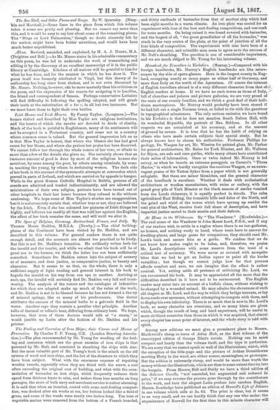Hanabook for Travellers in Yorkshire. (Murray.) — Compared with his foreign handbooks,
Mr. Murray's English handbooks are like micro- scopes by the side of opera-glasses. Here is the largest county in Eng- land, occupying nearly as many pages as either half of Germany, and more than Italy on the north of the Apennines. Of course the interest of English travellers abroad is of a very different character from that of4i English readers at home. If we have no such towns as those of Italy,.-" full of churches and palaces and picture galleries, wo are very proud of the seats of our county families, and we think a good deal of their half- dozen masterpieces. Mr. Murray would probably have been stoned if he had left out a single Norman tower, or failed to vie with the gazetteer in topographical minuteness. The only serious omission we have found in his Yorkshire is that he does not mention South Dalton Hall, with its wonderful Reynolds, the portrait of Mrs. Siddons. In all other respects we are astonished at his accuracy, and at the amount of ground he covers. It' is true that he has the habit of relying on others who have made certain subjects their special study. But he always knows how to choose his authorities. Professor Phillips for geology, Dr. Waagen for art, Mr. Winston for painted glass, Mr. Parker for general architecture, Mr. Raine for York Minster, and Mr. Walbran for Ripon, are safe and sure guides, while many others have contributed their mites of information. Once or twice, indeed Mr. Murray is led astray, as when he inserts an extreme panegyric on Caracci's " Three Marks," in which we hardly recognize the cautious Waagen, or an extra- vagant praise of Sir Tatton Sykes from a paper which is not generally eulogistic. But these are minor blemishes, and the general character of the handbook is excellent. Whether it deals with ecclesiastical architecture or woollen manufacture, with ruins or cutlery, with the grand grey pile of York Minster or the black masses of smoke vomited from the Leeds chimneys, it is equally perfect in details. The calm agricultural East Riding, the romantic lulls and dales of the North, and the grind and whirl of the towns which have sprung up amidst the coal pits of the West, receive their full share of description, and have impartial justice meted to their Merits and their defects.






























 Previous page
Previous page